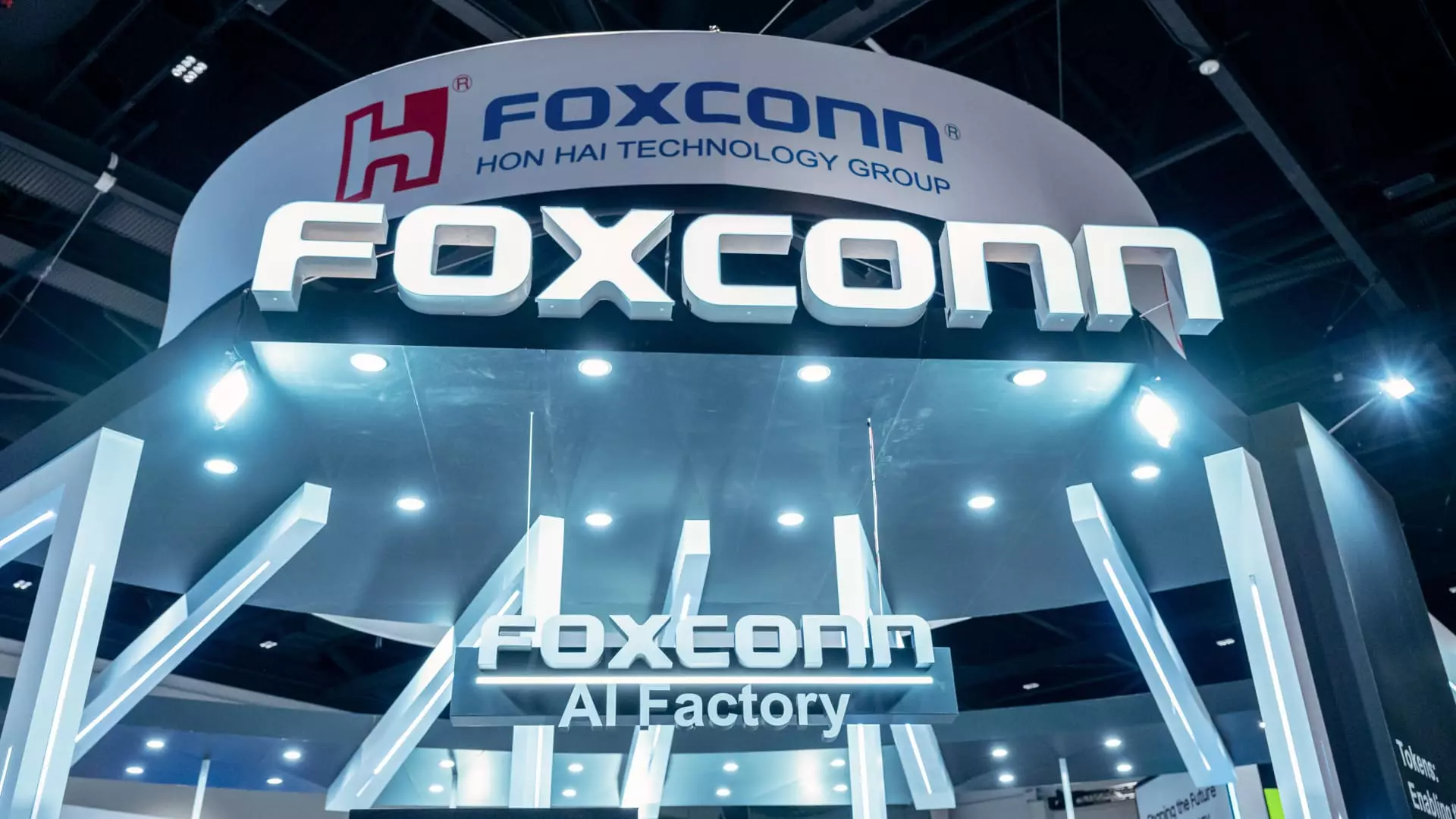Foxconn, the titan of global electronics manufacturing, has demonstrated a remarkable ability to adapt and thrive amidst a turbulent geopolitical landscape. The reported 27% year-over-year increase in second-quarter operating profit signals more than just quarterly dispensation—it underscores the company’s strategic pivot towards high-margin, future-oriented sectors like artificial intelligence. Yet, beneath these impressive numbers lies a complex web of risks and uncertainties that could undermine its apparent success. The question is whether Foxconn’s newfound AI focus can sustain this momentum or if it’s merely riding a fleeting wave of optimism driven by short-term market dynamics.
The company’s revenue, stagnating at NT$1.79 trillion, aligns with analyst predictions, providing a veneer of stability amid global economic upheaval. However, the real story is in its profit margins: a net profit of NT$44.36 billion not only exceeds expectations but hints at a profitable reorientation away from traditional consumer electronics, heavily reliant on making Apple’s iPhones. This shift towards AI servers and infrastructure seems promising, but it also raises concerns about whether Foxconn is overextending itself into a highly competitive and unpredictable AI supply chain.
The Strategic Gambit into AI and Data Centers
Foxconn’s move to position itself within the AI ecosystem is both daring and necessary. Its burgeoning server business—comprising 41% of revenues—has begun to outpace its classic consumer electronic manufacturing. Partnering with Nvidia, an industry leader in AI chips, exemplifies its effort to embed itself into the backbone of artificial intelligence development. The company’s forecast of a 170% revenue spike in this segment for the current quarter is aggressive, bordering on speculation about the enduring growth of the AI market. Such optimism may be justified in the short term, but it risks glossing over fundamental issues such as market saturation, technological obsolescence, and shifting geopolitical allegiances.
Foxconn’s strategic alliances, like its investment in TECO Electric & Machinery, signal an intent to build robust AI data centers, but these ventures depend heavily on a stable global environment. The company has publicly acknowledged the impact of “evolving global political and economic conditions”: an acknowledgment that hints at underlying vulnerabilities. Amidst ongoing trade tensions and the unpredictable nature of US-China relations, Foxconn’s ambitious diversification could be hampered by regulatory obstacles or trade restrictions.
Geopolitical Headwinds and Their Potential Fallout
The company’s geographic strategies are under intense scrutiny, especially as U.S. tariffs threaten to derail its growth plans. The move of most U.S.-bound iPhone production to India demonstrates Foxconn’s attempt to mitigate risks associated with tariffs, but it’s a stopgap solution rather than a long-term fix. The 20% combined tariff on Taiwanese exports and the looming threat of a 100% tariff on semiconductors illustrate that Foxconn’s supply chain is vulnerable to volatile trade policies. These tariffs are more than mere economic hurdles; they threaten to disrupt entire production lines and erode profit margins.
Moreover, Foxconn’s announcement of a $1 billion US investment over ten years, while opportunistic, indicates a defensive posture designed to appease American regulators and stave off potential decoupling. However, such investments are inherently risky if political tensions escalate further. The delicate balance the company must maintain between China, Taiwan, and the United States is a testament to its survival instincts but also a priority that could lead to strategic limitations or forced concessions.
Incompatibilities and Future Risks
The diversification into electric vehicles and semiconductors may seem like natural progressions, yet these sectors are plagued with their own formidable obstacles. They require massive capital expenditure with uncertain returns and are dominated by entrenched competitors with far deeper pockets. Foxconn’s move to invest heavily in these areas could stretch its financial resources, diluting focus from its core competencies in electronics manufacturing and AI.
Furthermore, reliance on the global chip market, especially in a climate of rising tariffs and international tensions, leaves Foxconn vulnerable to supply chain disruptions and sudden policy shifts. Building resilient, independent supply chains may be a strategic necessity but remains a daunting challenge in an increasingly protectionist environment.
A Future Shaped by Policy and Power Dynamics
In essence, Foxconn’s recent performance reflects impressive agility, but it also exposes the fragile foundation on which this growth rests. As a center-right liberal actor in the global market, the company has shown resilience by shifting operational bases and diversifying its portfolio, but geopolitical risks loom large. The company’s attempts to carve out a space in AI and advanced manufacturing could be eventually overshadowed by the unpredictable nature of international relations, especially in an era where economic security is intertwined with national power.
While Foxconn’s numbers tell a tale of success, the broader implications reveal a manufacture on a knife’s edge—balancing between opportunity and peril. Its future hinges on navigating these treacherous political waters, which may ultimately test whether the current growth is sustainable or just fleeting.

